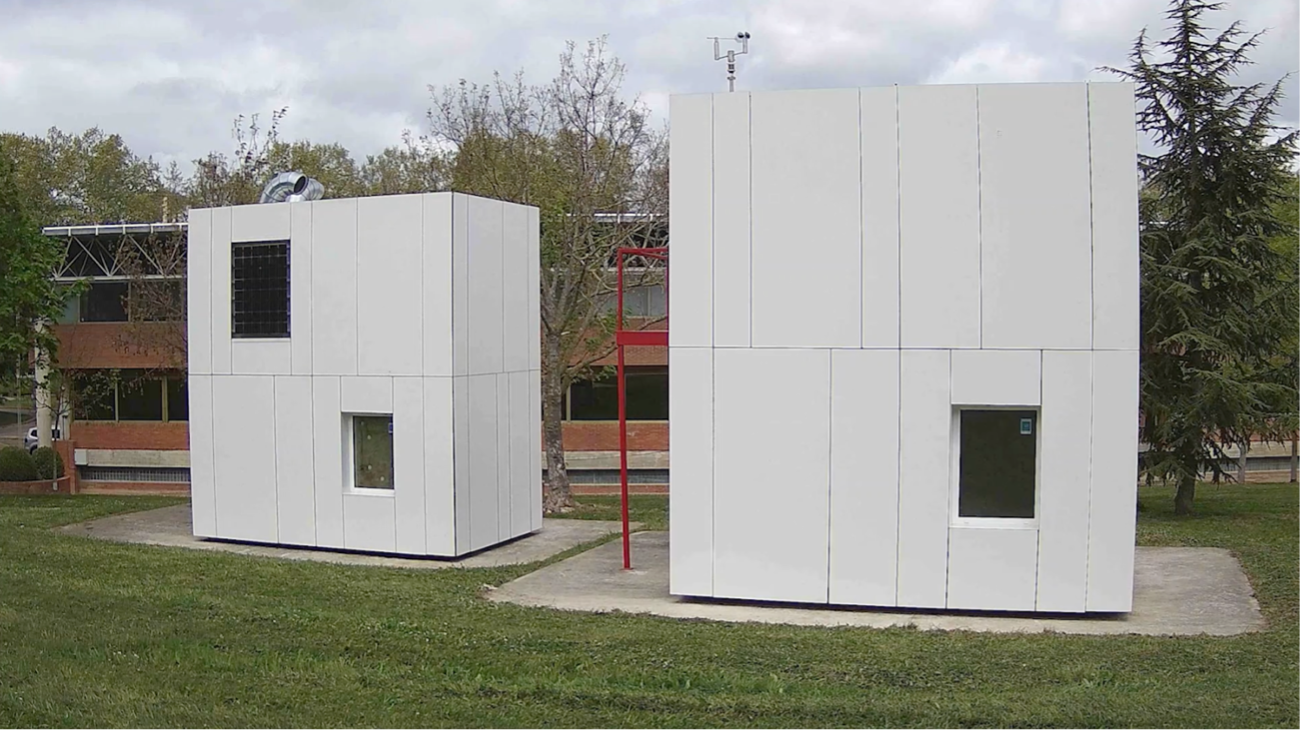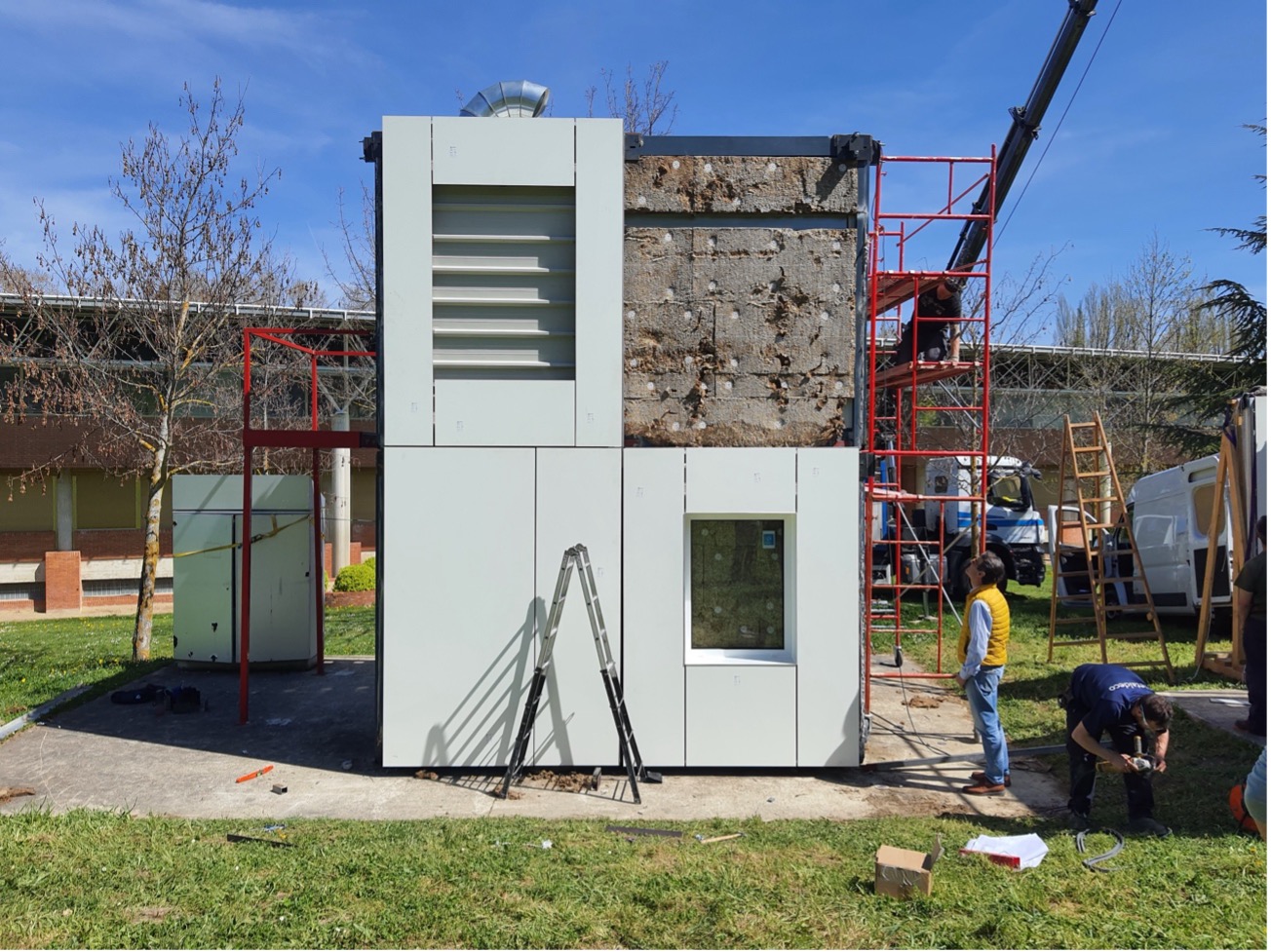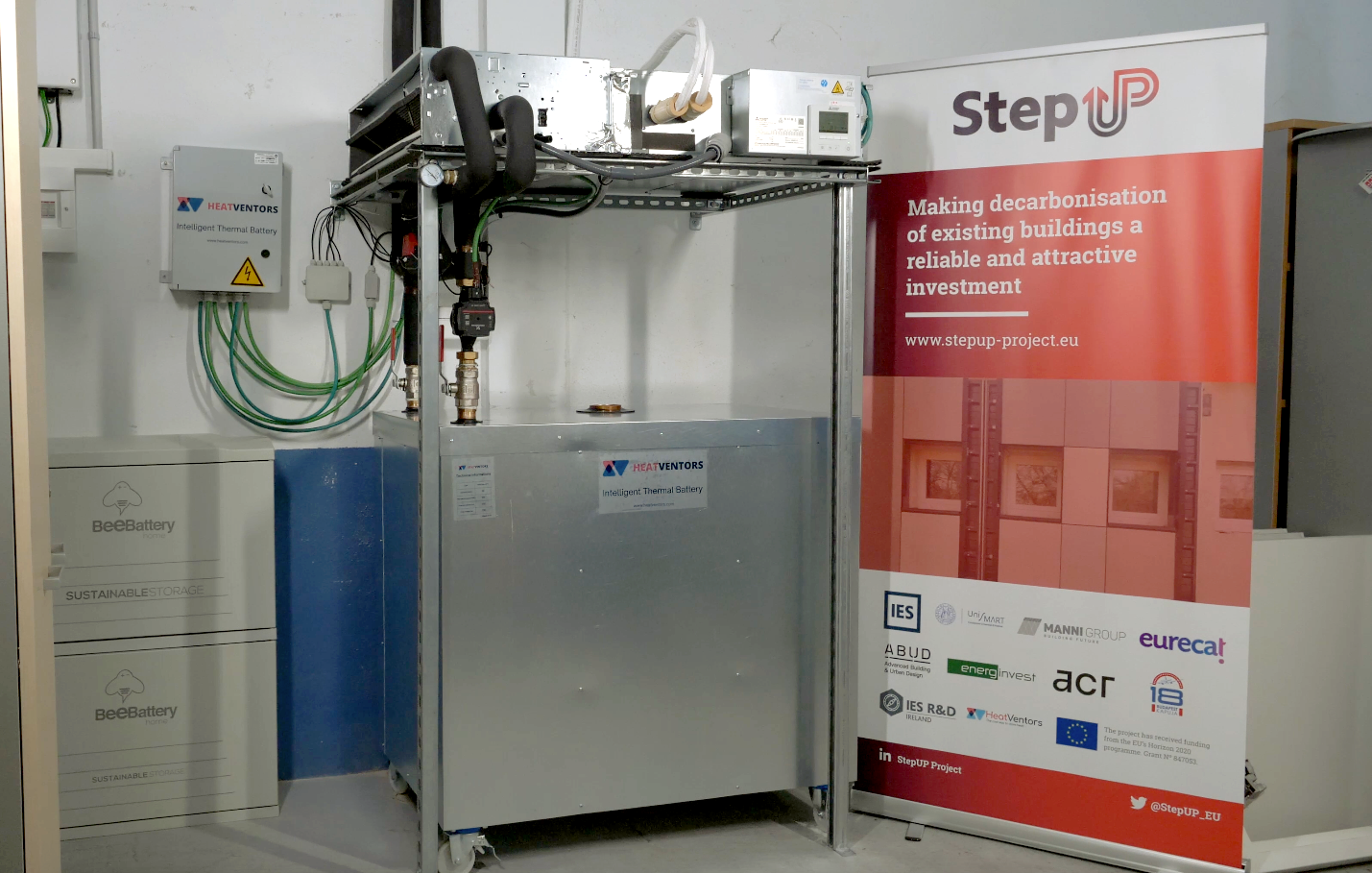
In the realm of prefabricated and sustainable construction and building renovation, the StepUP project has emerged as a pioneering initiative. The Spanish Pilot, undertaken by ACR, has faced numerous challenges while working towards demonstrating innovative technologies. This article explores the journey, setbacks, and successful outcomes of the Spanish Pilot within the StepUP framework.
Initial ambitions and unforeseen challenges
The Spanish Pilot was designed with a clear focus on deep renovation needs of multi-owner residential buildings. Monasterio de Urdax (MdU) in Pamplona emerged as the most feasible site for renovation. Despite the commitment of the residents and progress made in monitoring the building’s energy performance, the project encountered significant delays in obtaining construction permits. In fact, it has not been possible to execute the MdU’s renovation within the timeline of the StepUP project.
Thus, two pilots were designed to demonstrate the StepUP technologies and correlate the results with MdU building.
Implementing the StepUP technologies
Façade Renovation at Universidad de Navarra
The first Spanish pilot entailed the renovation of two test cells at the R&D facilities of the Universidad de Navarra, Pamplona, using the StepUP Plug & Play façade solution.
These test cells provided a unique opportunity to evaluate the installation process, particularly in terms of addressing corner elements and integrating third-party technologies.
The renovation involved the installation of ten regular modules (five per floor) and eight corner modules (four per floor) per each test cell, which make a total of 36 modules across both test cells.
The installation process involved several steps, beginning with the removal of the existing façade, followed by the installation of 40 anchor elements, and culminating in the placement of the Plug & Play modules.

Installation of the Plug & Play modules in the University of Navarra test cell facilities
The procedure presented significant challenges. First, the anchor installation method required adaptation. Additionally, some on-site rework was necessary, including resizing anchor elements, adding sealing rubber, and readjusting the outer HPL layer.
Given these complexities, the decision was made to renovate one building completely before proceeding to the second. This approach allowed for incorporating lessons learned from the first renovation, thereby minimizing on-site adjustments, and streamlining the overall installation process.
Integrating a refrigeration system with storage capacity
The second pilot was a multi-use building owned by ACR in Pamplona, aimed to integrate a cooling system with storage capacity for the server room into the existing HVAC system, without modifying the refrigerant circuit.
This was achieved through a unique air-based cooling approach, using the HeatTank technology.
The HeatTank, a tank capable of storing cool energy through Phase Change Material (PCM), was connected to the inner HVAC unit through a compact heat exchanger. This allowed the system to charge during off-peak electricity hours and discharge when cooling was required in the server room.

HeatTank installed in ACR facilities
This innovative approach demonstrated the feasibility of integrating a refrigeration system without altering existing infrastructure. The development of the compact unit, combining the internal HVAC unit and the charging heat exchanger, showcased the potential for high-cooling-demand applications. Besides, the entire installation and commissioning completed within a single week.
Results and impact
The Spanish Pilot has contributed significantly to the understanding of StepUP Plug & Play technologies. It complements the results from the Hungarian Pilot and has opened new avenues for exploring energy-efficient solutions in building renovation.
Key outcomes:
- The Plug & Play façade solution showed improved installation ratios compared to conventional ventilated façades.
- Real-time data collection and analysis were facilitated through IT StepUP LEAN tools, allowing for accurate measurement of execution times on-site.
- The pilot highlighted areas for improvement for the Plug & Play façade, such as increasing the flexibility of corner modules and simplifying the fixing system between panels to optimize the time of site.
- The integration of the HeatTank technology provided a feasible solution for cooling applications in high-demand environments.
Conclusion
The journey of the Spanish Pilot within the StepUP project showcases the resilience and adaptability required in today’s construction industry. Despite the initial challenges and setbacks, the pilots have contributed to a deeper understanding of StepUP technologies. These pilots have not only complemented the Hungarian Pilot but also opened new avenues for exploring sustainable building solutions.
Ultimately, the success of these pilots underlines the importance of flexibility and creativity in achieving sustainability goals, offering valuable lessons for future projects and initiatives.
As the project moves forward, the lessons learned from these pilots will serve as a foundation for further advancements in sustainable building renovation.
Author: Construcciones ACR
 This project has received funding from the European Union’s Horizon 2020 research and innovation programme under grant agreement no. 847053.
This project has received funding from the European Union’s Horizon 2020 research and innovation programme under grant agreement no. 847053.
This website reflects only the author’s views. The European Climate, Infrastructure and Environment Executive Agency is not responsible for any use that may be made of the information it contains.
